Christian Ministry in a Red & Blue World
Politics pits people against each other – even Christians against Christians. Should Christians be involved in politics? Would Jesus belong to a political party? Can we talk with each another (and listen!) when we disagree? Come to Hesston College, October 19 – 21 for “Christian Ministry in a Red and Blue World.” Greg Boyd (well known speaker and author of the New York Times Best seller The Myth of a Christian Nation), John D. Roth (Goshen College professor and popular speaker) and a host of workshop presenters will lead us in our conversation. Check the link on the Hesston College website (www.hesston.edu) to register.
Save the Date!
Franconia Conference Assembly will be held at Franconia Mennonite Church this year Friday evening, November 9, and Saturday, November 10. The theme is “Embracing God’s Mission.†Gilberto Flores, Mennonite Church USA, will be the keynote speaker Friday evening. Saturday will feature worship, discernment, and equipping seminars. Plan now to attend!

 At 3 a.m. on June 14, 2007 several assailants broke through a skylight and into the Bogota Mennonite Church office of Justapaz: the Christian Center for Justice, Peace, and Nonviolent Action. Upon entering, they disabled the security and surveillance system and proceeded to steal two of Justapaz’s thirteen computers. The computers stolen were the two containing the most sensitive information including documented cases of political violence and churches active in courageous social justice work. They also held information on Justapaz staff, including Janna Hunter Bowman (Documentation and Advocacy Coordinator of Justapaz) and individuals connected with their documentation project entitled, “A Prophetic Call: Colombian Protestant Churches Document Their Suffering and Their Hope.†Later that day, after making phone calls to colleagues in both the United States and Colombia in order to coordinate emergency response between Bogota and Washington, D.C., a troubled yet remarkably calm Janna Hunter Bowman sat down with me to talk about her work and her life in Colombia.
At 3 a.m. on June 14, 2007 several assailants broke through a skylight and into the Bogota Mennonite Church office of Justapaz: the Christian Center for Justice, Peace, and Nonviolent Action. Upon entering, they disabled the security and surveillance system and proceeded to steal two of Justapaz’s thirteen computers. The computers stolen were the two containing the most sensitive information including documented cases of political violence and churches active in courageous social justice work. They also held information on Justapaz staff, including Janna Hunter Bowman (Documentation and Advocacy Coordinator of Justapaz) and individuals connected with their documentation project entitled, “A Prophetic Call: Colombian Protestant Churches Document Their Suffering and Their Hope.†Later that day, after making phone calls to colleagues in both the United States and Colombia in order to coordinate emergency response between Bogota and Washington, D.C., a troubled yet remarkably calm Janna Hunter Bowman sat down with me to talk about her work and her life in Colombia. Janna explained that the program she coordinates not only documents and denounces violence, but also announces hope through reporting on social restoration and peacebuilding initiatives carried out by local churches amidst the violence. “It is incredibly humbling and a sacred privilege to be able to accompany these faithful servants as they live out sacrificial obedience joyfully, even when it means risking their own lives,†she said.
Janna explained that the program she coordinates not only documents and denounces violence, but also announces hope through reporting on social restoration and peacebuilding initiatives carried out by local churches amidst the violence. “It is incredibly humbling and a sacred privilege to be able to accompany these faithful servants as they live out sacrificial obedience joyfully, even when it means risking their own lives,†she said.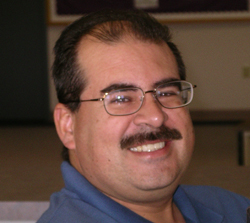 I love questions.
I love questions.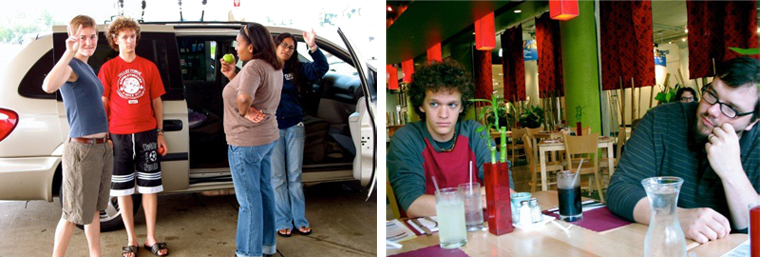

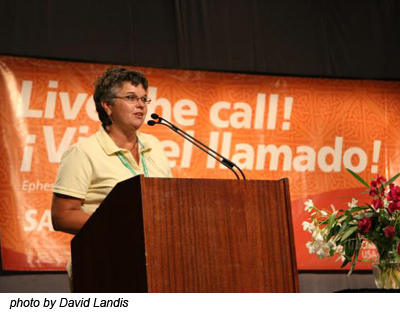 I’m a young(er) adult. And like many of my peers, I often bemoan how our tradition often
I’m a young(er) adult. And like many of my peers, I often bemoan how our tradition often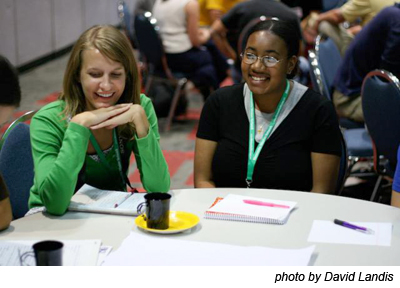 San Jose was a place to find encouragement and form conviction. I’m encouraged that our denominational leaders are teaching us to honor and learn from valuable parts of our past; but also, they make it clear that we are called to boldly walk into a future that might look very different from our past. And I’m convicted to sing a favorite song of my childhood: “Hide it under a bushel, No! I want to let it shine.†Many North American Christians are in search of a faith practiced from our perspective. And they should not have to look so hard to find it.
San Jose was a place to find encouragement and form conviction. I’m encouraged that our denominational leaders are teaching us to honor and learn from valuable parts of our past; but also, they make it clear that we are called to boldly walk into a future that might look very different from our past. And I’m convicted to sing a favorite song of my childhood: “Hide it under a bushel, No! I want to let it shine.†Many North American Christians are in search of a faith practiced from our perspective. And they should not have to look so hard to find it. I was looking forward to San Jose for several reasons, some more noble than others. Coming from rural Vermont, I wanted to watch a big city fireworks display on July 4th, sing hymns in a gathering with more than two tenors, and take in some great workshops.
I was looking forward to San Jose for several reasons, some more noble than others. Coming from rural Vermont, I wanted to watch a big city fireworks display on July 4th, sing hymns in a gathering with more than two tenors, and take in some great workshops.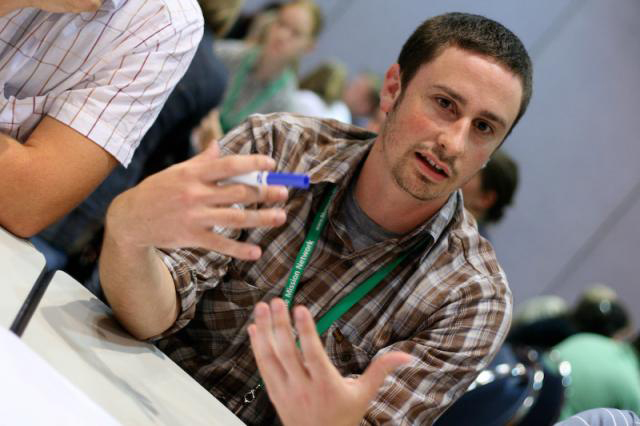
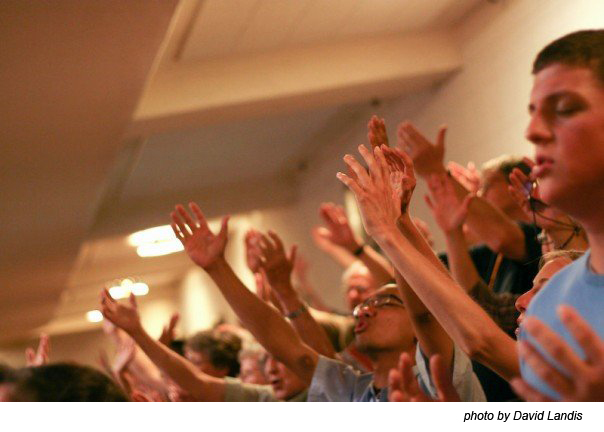
 One word can make a difference! In a former role, I vividly remember the day I misread my boss’s handwriting and typed “now†instead of “not†in a letter to the FDA. It almost cost me my job and my company significant credibility.
One word can make a difference! In a former role, I vividly remember the day I misread my boss’s handwriting and typed “now†instead of “not†in a letter to the FDA. It almost cost me my job and my company significant credibility. And over the past five years we’ve been sharing their stories. Intersections has featured many stories of how these organizations have touched lives in the name of Christ. Over the years articles with tiles such as “A Moment of Grace,†“Help for the Least of These,†“Counting Blessings,†“Faith Walk Leads to Holy Moment in CD Pond,†“Entertaining Angels,†“Repentance and Renewal in Zurich and Beyond,†“Anatomy of a Calling,†“Walking the Talk,†“Neighbor Helping Neighbor,†“Vigil for Peacemakers,†and “The Gospel is Our Daily Mission,†belie the stuff of ministry, not just business.
And over the past five years we’ve been sharing their stories. Intersections has featured many stories of how these organizations have touched lives in the name of Christ. Over the years articles with tiles such as “A Moment of Grace,†“Help for the Least of These,†“Counting Blessings,†“Faith Walk Leads to Holy Moment in CD Pond,†“Entertaining Angels,†“Repentance and Renewal in Zurich and Beyond,†“Anatomy of a Calling,†“Walking the Talk,†“Neighbor Helping Neighbor,†“Vigil for Peacemakers,†and “The Gospel is Our Daily Mission,†belie the stuff of ministry, not just business. The transition of language, from “Conference Related Organizations†to “Conference Related Ministries,†is one small way that Franconia Conference can recognize and continue to build the integrity of these relationships into relationships that transcend administrative paperwork and into living and vital partnerships of joining hands and hearts to do the work which Christ is calling us all to in this region and in this world.
The transition of language, from “Conference Related Organizations†to “Conference Related Ministries,†is one small way that Franconia Conference can recognize and continue to build the integrity of these relationships into relationships that transcend administrative paperwork and into living and vital partnerships of joining hands and hearts to do the work which Christ is calling us all to in this region and in this world.